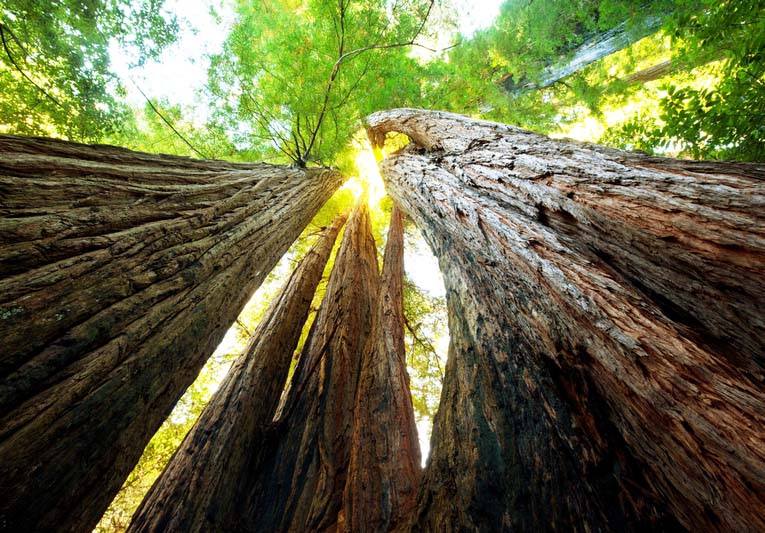
Most of us already know that trees are a significant part of our planet’s overall environmental health. Trees absorb carbon dioxide and produce oxygen, which helps reduce global warming. Trees also provide a habitat for innumerable species of birds, insects and other organisms.
But did you know that there are several types of “super” trees that do even more that the average tree to benefit the environment?
Giant Redwoods: One type of super tree is the costal redwood (also known as the giant redwood). These trees grow in a relatively small area just off the coast of Northern California. Redwoods grow well in this area of the United States because of the distinctive humid climate, with fog that occurs almost every day. This fog helps to provide the ideal conditions for the trees to grow so large. They can live for up to 2,000 years.
Giant redwoods are generally regarded as the tallest trees in the world, with heights of up to 379 feet. This is over 50 feet taller than the second tallest species of tree (the Australian mountain ash). Their total size and volume are impressive, too. They can be up to 22 feet in diameter at their bases, and it is estimated that they can weigh up to 1.6 million pounds.
Giant Sequoias: Giant sequoias are genetically very similar to the giant redwoods, but grow in a significantly different environment. The sequoias grow in California’s Sierra Nevada high mountains, at elevations up to 7,000 feet above sea level. In contrast to the growing conditions needed by the redwoods, giant sequoias require times with dry heat in order to thrive. Giant sequoias can live for well over 3,000 years.
Giant sequoias are usually not as tall as the giant redwoods (these sequoias can grow to just a little above 300 feet tall), but because they are much thicker, they are considered to be the largest (in terms of total weight) trees in the world. In fact, they can weigh more than 2.5 million pounds, and have trunks measuring over 40 feet in diameter at the base.
Giant Bamboo: Strictly speaking, bamboo isn’t a tree at all. Rather, it’s a woody grass – the largest member of the grass family. However, because of the cultivation techniques used to grow bamboo, most people think of it as being a tree. It grows well in many different climates across the world, and on all continents except for Europe and Antarctica.
The growth rate of bamboo is what makes it a super tree. Under ideal conditions, they can grow more than three feet per day. This makes bamboo one of the fastest growing plants in the world. It also means that bamboo can easily be farmed in very sustainable ways. It’s also worth noting that bamboo can be put to a number of uses besides construction. Bamboo can be used in furniture construction, to make paper and to make clothing.

